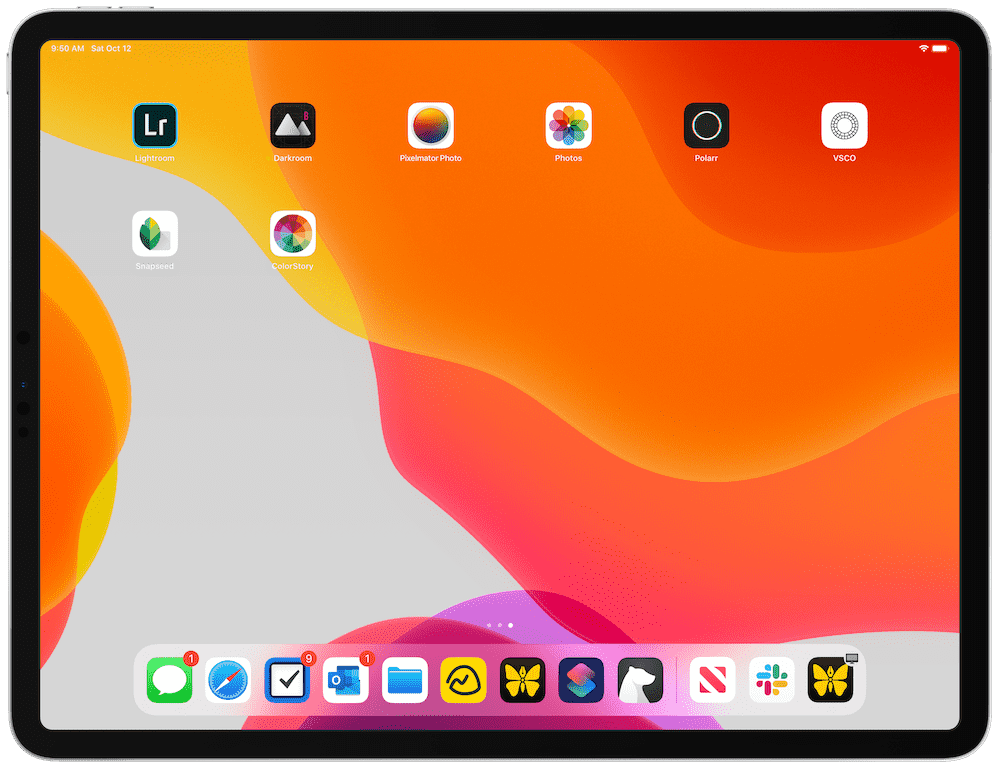

But that won’t ship for at least a couple of months, for reasons Apple wouldn't elaborate on, so I couldn’t review it. Apple has also introduced a new accessory keyboard for the iPad, one with adjustable viewing angles, a USB-C port, and a trackpad. Add the Apple Pencil ($129) and the Smart Keyboard ($199), and you’re nearing $2,000. This configuration costs a whopping $1,650. The loaner unit that Apple shipped me (reader, it’s the first time I’ve wiped down an iPad box with disinfectant wipes) is the mother of iPads, a 12.9-inch model with 1 terabyte of internal storage and cellular capabilities. Like the last iPad Pro, this one starts at $799 for an 11-inch model with 128 gigabytes of storage. As before, I somehow always cover this camera when I'm holding the iPad. The buttons are all in the same place, and it has the same FaceID camera as before. Materially, it looks and feels the same: The new tablet has an aluminum enclosure, and its bright “liquid retina” display has the same resolution, pixel density, refresh rate, and tone-shifting feature as the previous model of iPad Pro. The 12.9-inch review unit I now have feels massive in comparison, but also remarkably light given its larger size.
#APPLE PHOTO EDITOR IPAD PRO PRO#
Prior to this review period, I had been using an 11-inch iPad Pro from 2018, and I love it. The new iPad Pro comes in two sizes: There’s one with an 11-inch diagonal display and another with a 12.9-inch diagonal display. The new iPad Pro connects to an adjustable keyboard accessory, which goes on sale in May. In the meantime, I’m sure some of you would like to know whether to buy the new iPad Pro, and I want to help with that, so let’s do this. My hope is that someday in the near future, things change again, and for the better. As much as my earlier reviews were time stamps from another time, this review is a time stamp of the iPad in the era of Covid-19. Things have changed quickly over the past couple of months, and even more rapidly over the past couple of weeks, and it’s impossible to ignore this.

Back then it was still considered awkward to use your tablet as a camera now, it is socially acceptable, but we are socially distanced from one another.

I sat on a crowded pier in San Francisco drawing with the Apple Pencil, a total novelty at the time. In 2015 I reviewed the very first iPad Pro, and what strikes me now as I look back at that review is how outside I was.
You might even say that this terrible now is a good time to order an iPad, while many people are in isolation.īut even reviewing the iPad has changed. Who knows what that future looks like … but there will likely be an iPad. If Apple can somehow maintain its shipping track record, that means there will be new iPads in the future too. Maybe there’s comfort in this: Many many months ago, Apple started designing this product, and it has arrived despite more recent disruptions to global supply chains. Apple has shipped a new iPad Pro in the middle of a global pandemic and on the cusp of a spectacular economic downturn. I’m not being dramatic, nor am I able to make that purchase decision on behalf of anyone else at the moment. It is difficult to say whether someone should spend $800-or up to $1,650 for the larger, fully loaded version without accessories-for a tablet during a time when the world is cratering, with no end in sight. What’s challenging about this iPad is putting it into context. Now, for the sake of AR apps that Apple tries earnestly to push, lidar is in a tablet. The new iPad even has a lidar scanner-remote sensing technology that’s typically used in aircraft, mapping vehicles, and self-driving cars. It’s an iPad Pro, one with a brilliant display, a superfast chip, and cameras that are improved from the last iPad. Technologically, it’s the best iPad you can buy. I struggled to write about this new iPad.


 0 kommentar(er)
0 kommentar(er)
